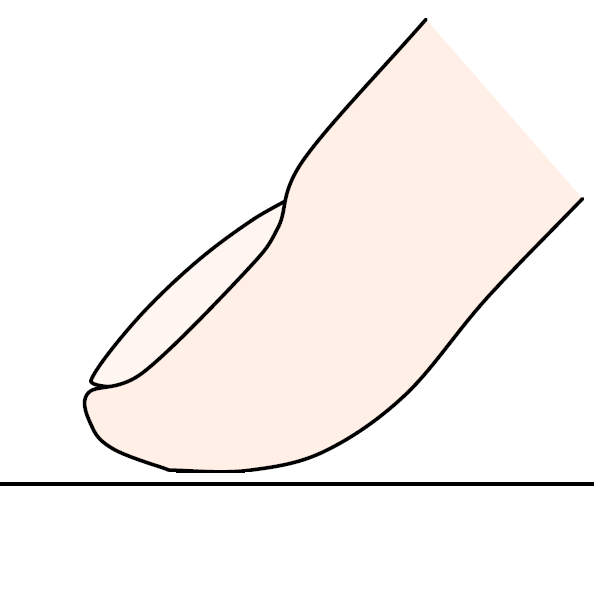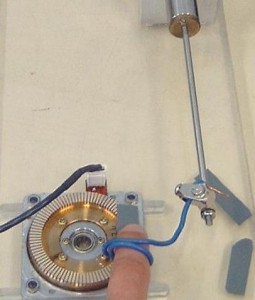The STIMTAC Project
STIMTAC is a TouchPad-like tactile display
The offer of output devices for computer environments is growing and their performances improve regularly. Apart from the popular visual or auditive devices, the use of force feedback is becoming more widespread and helps users to interact with computer applications. Yet, a specific stimulation of the finger pulp is not often provided by those interfaces. Touch feeling is thus missing, hence a lack of realism as applications don’t take advantage of the tactile channel. There is therefore a need for tactile stimulators compact enough in size to be naturally integrated into a desktop computer, while providing tactile illusions sufficiently realistic to simulate different surface textures.
How does it work ?
The idea is to make the surface interacting with the user’s finger vibrate at a controlled amplitude so as to modify the friction. Indeed, when the surface is vibrated fast enough parallel to itself, like a loudspeaker membrane would, the air trapped between the finger and the surface forms an air cushion called squeeze film that modifies the contact friction coefficient. By controlling the vibration’s amplitude according to the position of the user’s finger on the surface, various textures can be simulated.
In practice though, vibrating the surface in such a way at ultrasonic frequencies (to avoid audible annoyance) is very difficult. Actually, it has been observed that a similar effect can be obtained if a standing wave distorts the surface, which is easily and efficiently done at resonance of an elastic plate for instance. As long as the wavelength is short enough (10-20 mm), an amplitude of 1 µm to 2 µm is sufficient for the effect to be felt uniformly on the surface.
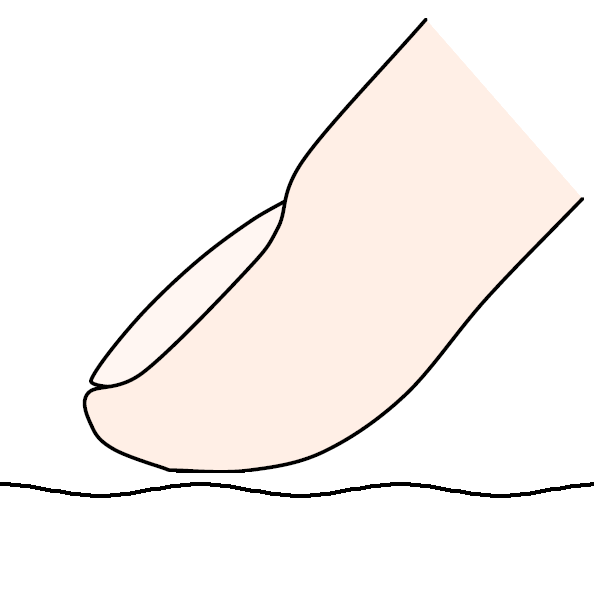 Resonance reduces the power requirement
Resonance reduces the power requirement
History
2004 : Prehistoric time.
First prototype of StimTac used a free stator of an Ultrasonic Motor called USR60. This ring shaped resonator can provide 3 μm vibrations at 40 kHz. A plastic tape was bonded to level the touched surface to eliminate the effect of the teeth machined on the original stator. A Linear Variable Differential Transformer (LVDT) sensor was used to detect fingertip’s position. This solution was far from optimal: measurement was limited to one direction, required to be attached to the finger, and the accuracy of the contact area’s position was poor.
 2007 : prototypes made at the lab
2007 : prototypes made at the lab
2007: First prototypes made at the lab.
The purpose of StimTac was to produce a tactile device which could render good tactile stimulation, while being as compact as possible. At the time, the « Squeeze film effect » was found to be the main interaction process between the vibrating plate and the fingertip. Thanks to the modeling developed at the lab, a specific prototype was then manufactured. The design resulted in a plate excited by piezoelectric ceramics to obtain a stationary modal shape. Width and length were designed in order to promote the squeeze film.
2008: A portable tactile stimulator.
To operate, Stimtac needs an accurate finger position measurement. In order to get rid of the bulky and inaccurate LVDT sensor, a custom-made optical sensor was used to locate the user’s finger. The sensor was built from two white LEDs, a set of mirrors and a linear 200 dpi CCD array. An on-board DSP computes the centroids of two shadow images created by the user’s finger and transmits them on a serial line as absolute (x; y) coordinates at a rate of 120 Hz. The final resolution of the sensor is 170 dpi due to optical constraints and post-treatments.
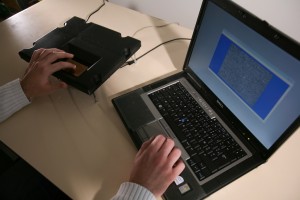 2008 : Stimtac becomes a portable tactile stimulator
2008 : Stimtac becomes a portable tactile stimulator
2010: Stimtac is thin, lightweight and sobre.
A re-design to improve energetic efficiency resulted in a new version of Stimtac that reduced the power losses down by 90%. As a result, the tactile plate didn’t heat up anymore, allowing to use the device over long period of time. Moreover, the rated power (0.5W) was sufficiently low to supply it directly from an USB port for instance. Regarding measurements, the optical sensor was abandoned, and replaced by combining force measurements provided by four sensors placed underneath the surface at various locations. These sensors being small, integration into an external touchpad was then possible, moreover force measurement was now available.
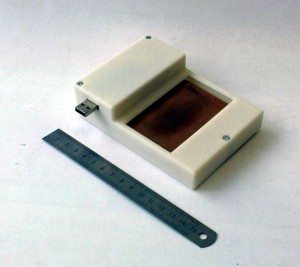 2010 : improvement in power consumption
2010 : improvement in power consumption
2012 : Shape, size and transparency.
Current research addresses possible variations around the initial design. For instance, a circular design allows to produce a handheld tactile feedback which can be explored with one thumb.
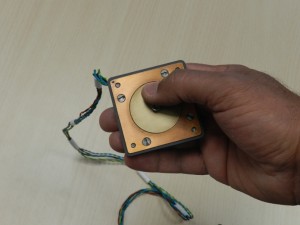 A circular design |
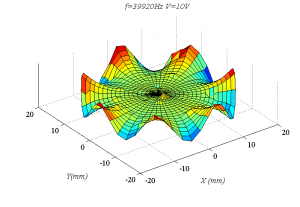 The excited radial vibration mode |
A miniaturized version implemented on the back of the mouse can simulate the feeling of the notches of the mouse wheel, while providing the possibility to perform bidirectional scrolling.
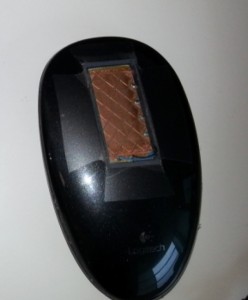 A miniaturized design integrated in a mouse
A miniaturized design integrated in a mouse
Another study aims at increasing the dimensions while preserving the tactile feedback on the whole surface, and keeping the electrical consumption low.
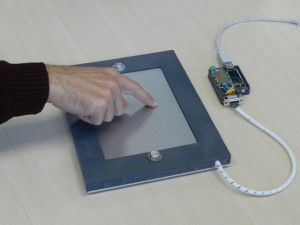 A large standalone |
 Experimental vibration mode cartography |
Of course, efforts have been made to develop transparent applications so as to see a screen placed beneath to provide feedback on a touchscreen for instance. A glass plate is thus used, and it has been demonstrated that piezoelectric actuation is fully compatible with resistive or capacitive multi touch sensors.
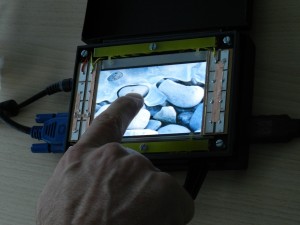 A transparent design |
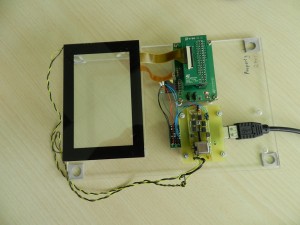 Appropriately excited, a capacitive touchscreen can provide a tactile feedback |
Photo credits : Ircica


